5 Ways To Avoid Stressing Your Dog Out
Friends and Neighbors,
We talk a lot about environmental stressors to our pets (holiday celebrations, city living, separation anxiety - to name a few), but less obvious stressors (and more common than you might think) are stressors inflicted by the pet parent. But don’t be too hard on yourself! Most of us aren’t certified dog behaviorists. With a little education and some extra effort, you can not only better identify your pup’s stress triggers, but ensure you’re not at the hand of them.
Some ways pet parents stress their dogs out are:
Over-socialization
So you have a social, happy and fun-loving dog - nice! This means you’ve done a great job of providing a safe and welcome environment for your pup. However, pet parents can make the mistake of perceiving their pup’s social tank to be similar to their own. Think of your dog like a toddler. A birthday party once a weeks is fine. But it’s probably not best to send them to a birthday party 4-5 times a week. In this example, the birthday party is dog daycare, dog parks, crowded patios, etc. Dogs are great at a lot of things, but one of those things is not self-regulation. It’s on us as pet parents to ensure our pups are socialized properly.
Physical Boundaries
We get it - you just want to squeeze that dog until it bursts! Funny enough, physical boundaries can be a trickier one to spot. Given that our dogs can’t talk, we have to watch closely for the queues that they’ve had enough physical contact. Some examples of disrespecting your pup’s physical boundaries are pulling them up on the bed or couch when they’re comfy on the floor, kissing their face without warning and forcing them into spaces before they are comfortable (an elevator, for example). Some signs that your dog’s physical boundary is being crossed is lip licking, side-eyeing and appeasement behaviors like ears back, crouching and doe eyes. Most of us are so bonded with our dogs that it can seem like boundaries don’t exists - but, they do! And they are very important to your dog’s happiness. A good rule of thumb is to invite them into a cuddle before diving in. Approach from the side, don’t make eye contact and extend your hand. If your dog leans into the invitation - we’re good! If not, it’s best to let sleeping dogs lie, as they say.
Codependency
The modern pet parent is extremely bonded to their pet(s). Most of us think of them as children! With that, comes its own challenges. Dogs are capable of forming deep bonds, but their needs are very different from our own. Just because we want to be with our dog every moment of every day, doesn’t mean we should. It’s healthy for your dog to establish their own bit of independence to prevent behaviors like separation anxiety, resource guarding and reactivity. We recommend giving your dog an hour of alone time each day, if possible. Let them chill in a separate room while you get some work done. Make goodbyes short and sweet! Give them a high value reward when you leave the home. You might think your dog wants to go everywhere with you (they might even try to!) but for their own health and happiness, a little independence goes a long way.
Introductions
Meeting new people and dogs can be a great experience for your pup. If your dog is open to introductions and you’re able to do it in a safe environment, it’s a win-win! However, just because our dogs are happy, social and comfortable doesn’t mean we don’t need to proceed gently with intros. Ease into letting other people handle and pet your dog until they have settled nicely into the space. If there are resident pets there, take the intro slow with treats specifically for your dog when they present a good behavior. We know our pets well, but other folks do not. Set them up for success by keeping your introductions thoughtful!
And our Favorite…Being a Helicopter Parent!
Dogs are intuitive creatures. They know when we’re happy, sad and even more so - anxious. We understand that it can be difficult to not worry about them, especially here at the vet, but it can drastically improve their experience when the pet parent allows them a bit of independence. Remember getting shots as a kid? If your parent held tightly onto your arm, essentially transferring all of their anxiety to you, you would probably be even more anxious! It’s important to put on a brave face - your dog will follow your lead. And we promise, it’s not all that bad for them when they go back to the treatment area. In most cases, they actually exhibit a bit more confidence at that point. Trust your dog! They won’t let you down.
Signs your dog is stressed:
Open mouth panting
Increased heart rate and breathing
Yawning
Whale eye
Lip licking
Looking away
Seeming over excited/hyper
We hope you find these tips useful and that they help keep your dogs happy and healthy. Don’t hesitate to reach out with any questions or to schedule a visit. We’re always here for you and your pets!
Sincerely,
The BLVD Team


